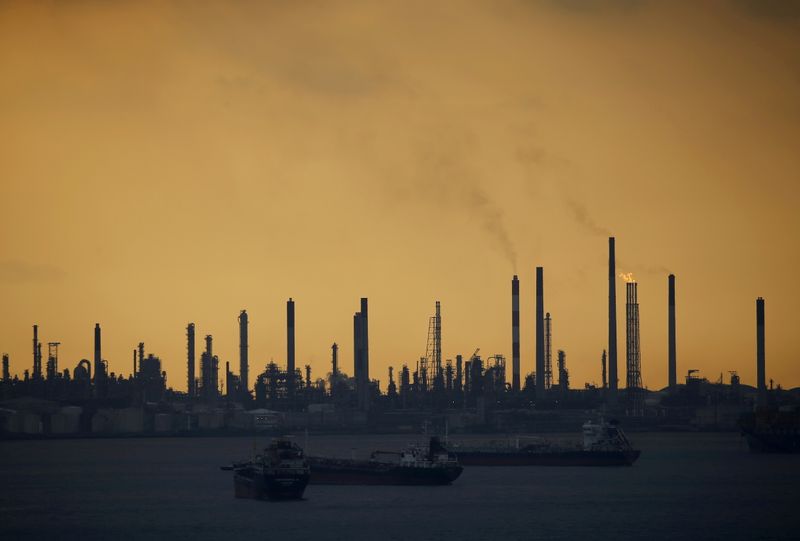SINGAPORE (Reuters) – Singapore is aiming to realise at least 2 million tonnes of carbon capture potential by 2030 as part of a broader effort to make its Jurong Island oil refinery hub more sustainable, its Economic Development Board said on Tuesday.
Many industries are looking at the process of capturing carbon dioxide emissions through storage or for reuse, as a way to reach green goals. But the process is still in development.
Singapore is aiming to create a testbed for the technology on Jurong Island, where the likes of Royal Dutch Shell and Exxon Mobil own petrochemical plants.
Both Shell and Exxon have flagged their interest in building carbon capture and storage facilities in Southeast Asia.
Singapore’s EDB also set a 2030 target for the energy and chemicals sector to increase the output of sustainable products by 1.5 times from 2019 levels.
By 2050, Singapore is aiming to increase the output by four times from 2019 levels.
Governments and companies are accelerating the hunt for ways to cut emissions and curb global warming by mid-century, by shifting away from fossil fuels and rapidly ramping up investment in renewables.
Shell said on Tuesday it plans to build a pyrolysis oil upgrader to turn plastic waste into chemical feedstock at its petrochemical complex in Singapore, part of its shift from oil and gas to renewables and low-carbon energy.
(Reporting by Florence Tan in Singapore; Writing by Chen Lin; Editing by Martin Petty)






















